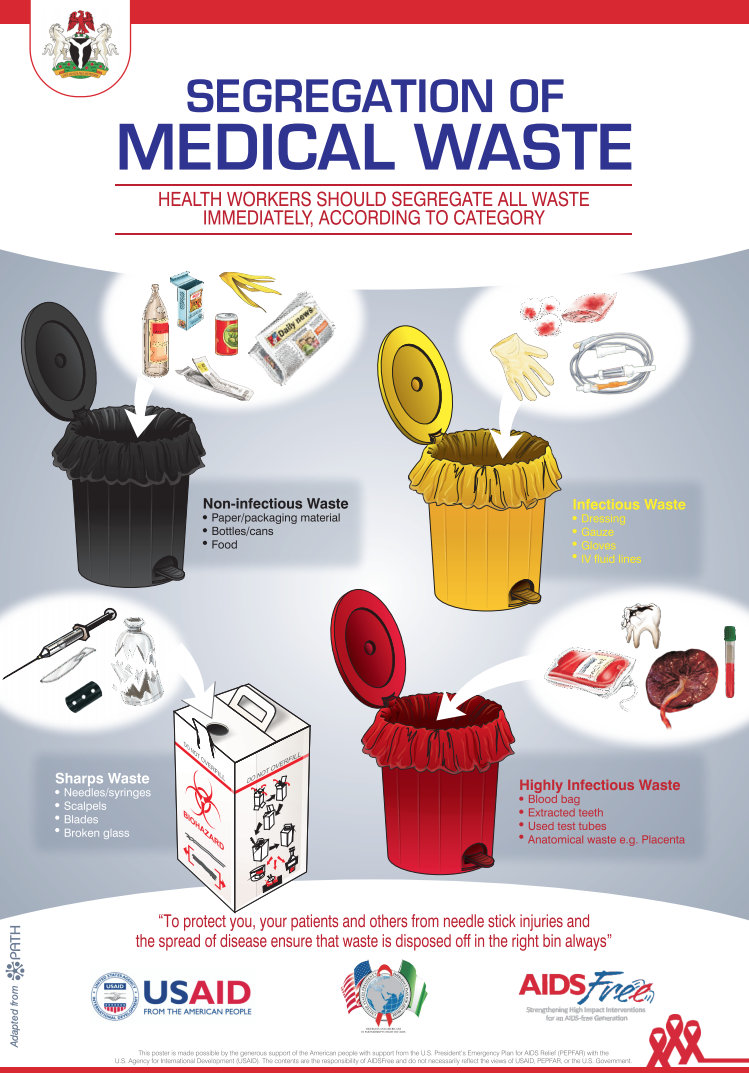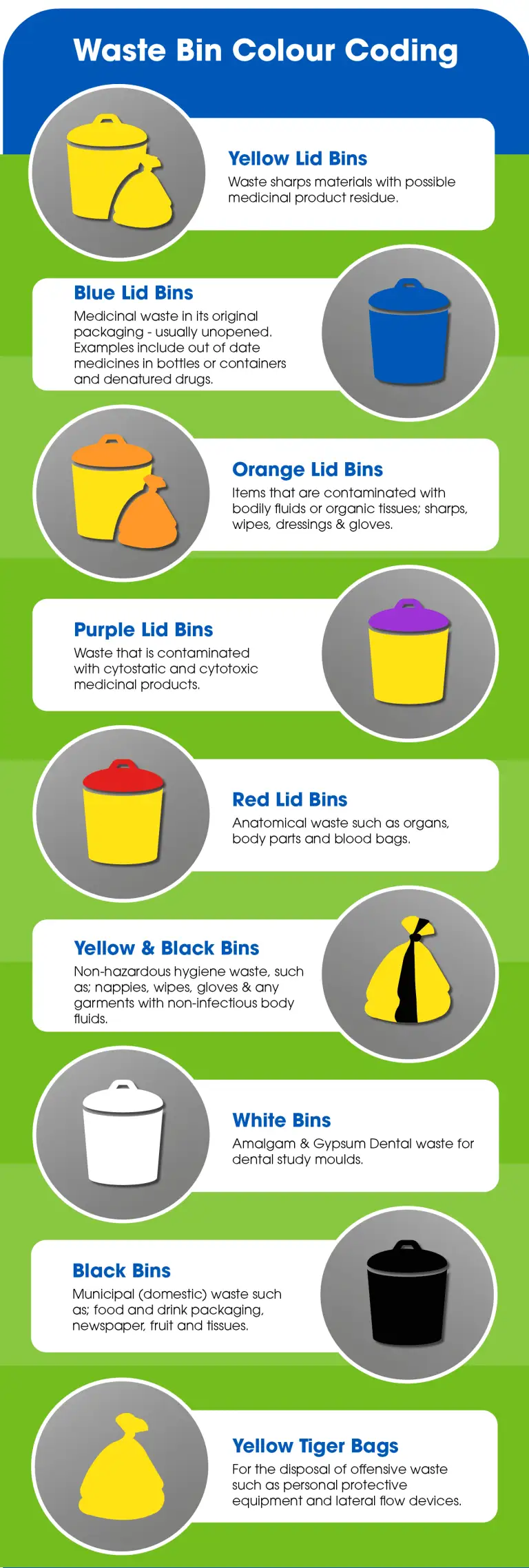Appropriate Disposal Strategies for Medical Waste
Appropriate disposal methods for clinical waste are of utmost relevance in guaranteeing the security of both health care employees and the basic public. The proper handling and disposal of clinical waste is critical to stop the spread of infectious illness and the contamination of the atmosphere. This consists of the risk-free disposal of sharps, transmittable waste, and pharmaceutical waste. Abiding by rigorous standards established by governing bodies is necessary to maintain compliance with legal policies and safeguard public health and wellness. This intro will certainly discover the significance of correct clinical garbage disposal, provide guidelines for handling different types of waste, and emphasize the demand for medical care centers to embrace finest methods. By complying with these guidelines, doctor can add to a much safer and much healthier atmosphere for all.
Significance of Proper Clinical Waste Disposal
Correct medical garbage disposal is of utmost significance in order to prevent the spread of infections and protect public health. Clinical waste refers to any waste created throughout medical procedures or from the medical care industry. This waste can include transmittable materials, such as blood or physical fluids, sharps, pharmaceuticals, and various other potentially unsafe materials. If not disposed of effectively, medical waste can posture major dangers to healthcare workers, patients, and the general public.
Among the key reasons for proper clinical garbage disposal is to stop the spread of infections. Medical waste can harbor various pathogens, consisting of bacteria, infections, and various other microorganisms that can trigger conditions. Inappropriate disposal can lead to the contamination of surfaces, water sources, and air, boosting the threat of infections. By securely disposing of medical waste, the possibilities of exposure to these microorganisms are substantially lowered, ensuring the safety of healthcare workers, patients, and the community at huge.
In addition, correct clinical garbage disposal is necessary for securing public health and wellness. Medical waste that is not correctly managed can contaminate dirt, water bodies, and also food sources. This can result in the transmission of diseases to animals and humans, positioning a significant public health threat (WasteX Medical Waste Disposal). By following correct disposal methods, such as treatment, partition, and containment, we can decrease the prospective risks linked with medical waste and safeguard the wellness of the community.
Handling and Disposing of Sharps
When it involves the handling and disposal of sharps, adherence to appropriate methods is important for ensuring the security of health care workers and protecting against the risk of injury or infection. Sharps include needles, syringes, lancets, and various other things with the potential to pierce or reduce the skin. As a result of their potential to send bloodborne microorganisms, such as HIV and hepatitis B and C, it is critical to handle and dispose of sharps properly.

Disposal of sharps containers must follow neighborhood policies and guidelines. It is best to make use of certified clinical waste disposal solutions that specialize in the proper handling and disposal of sharps to make sure compliance with regulations and lessen dangers to medical care workers and the environment.
Standards for Infectious Garbage Disposal
Healthcare centers must stick to rigorous guidelines for the disposal of contagious waste to avoid the spread of virus and secure public health. Transmittable waste, also called biohazardous or biomedical waste, describes products that are potentially polluted with transmittable agents or other unsafe substances. These materials consist of blood-soaked plasters, used handwear covers, samplings, and cultures. Correct disposal of infectious waste is important to ensure the safety and wellness of health care employees, people, and the general public.
The guidelines for transmittable waste disposal vary depending on the nation and local laws, however there are some usual practices that healthcare centers should comply with. All infectious waste must be set apart from other kinds of waste at the point of generation. Contagious waste should be delivered and disposed of by certified waste monitoring business that specialize in taking care of biomedical waste.
It is very important for healthcare facilities to have thorough training programs in place to inform personnel on the proper procedures for contagious garbage disposal. This includes training on waste segregation, storage space, and taking care of techniques. By adhering to these guidelines, healthcare facilities can properly manage infectious waste, decrease the danger of infections, and shield public health.
Best Practices for Pharmaceutical Waste Disposal
Pharmaceutical waste disposal must constantly be performed on a regular basis and according to professional guidelines. Proper management of pharmaceutical waste is necessary to secure public health and wellness and the atmosphere. Drugs can pose a significant risk if not dealt with correctly, as they may contaminate water sources, harm marine life, or also add to the growth of antibiotic resistance.
Among the very best methods for pharmaceutical waste disposal is to establish a designated collection system within healthcare centers. medical waste disposal service. This system must consist of different containers for various types of pharmaceutical waste, such as expired drugs, extra medications, and contaminated products. These containers need to be clearly labeled and situated in conveniently available areas to urge appropriate disposal by healthcare professionals
In addition, it is vital to inform healthcare team regarding the proper handling and disposal of pharmaceutical waste. Educating programs ought to concentrate on identifying different kinds of pharmaceutical waste, recognizing the linked threats, and complying with the suitable disposal treatments. Routine reminders and updates need to be supplied to ensure conformity with disposal guidelines.
In enhancement to interior techniques, health care centers ought to additionally establish collaborations with accredited waste management firms. These companies concentrate on the collection, transportation, and disposal of pharmaceutical waste. By functioning with these professionals, medical care facilities can make sure that their pharmaceutical waste is taken care of safely and in conformity with local guidelines.
Conformity With Legal Rules
In order to make certain compliance with lawful guidelines, it is vital for healthcare centers to comply with appropriate disposal techniques for medical waste. Clinical waste positions a significant threat to public health and the setting, making it important for medical care facilities to get rid of and deal with of it in conformity with the legislation.
Regulatory bodies, such as the Occupational Security and Health Management (OSHA) and the Environmental Defense Agency (EPA), have actually established standards and requirements for the appropriate disposal of clinical waste - WasteX Medical Waste Disposal. These regulations intend to protect medical care workers, waste management workers, and the public from prospective hazards connected with clinical waste

Non-compliance with lawful guidelines can lead to serious repercussions for health care facilities, consisting of penalties, lawful obligations, damage to credibility, and prospective harm to public health. Therefore, it is vital for medical care centers to stay up-to-date with the latest regulations and continually screen and enhance their waste management techniques.
Conclusion
Sticking to guidelines for disposing and taking care of of sharps, infectious waste, and pharmaceutical waste is crucial. It is crucial that medical care facilities maintain stringent methods for the correct disposal of medical waste to lessen threats and maintain a safe health care setting.
Clinical waste refers to any waste generated during clinical treatments or from the medical care industry. Infectious waste, likewise known as biohazardous or biomedical waste, refers to materials that are potentially polluted with contagious representatives or various other unsafe compounds. All transmittable waste needs to be set apart from various other kinds of waste at the factor of generation. Infectious waste should be carried and disposed of by qualified waste monitoring firms that specialize in handling biomedical waste.
Adhering to guidelines for handling and disposing of sharps, infectious waste, and pharmaceutical waste is essential. (medical waste removal)